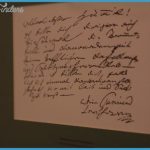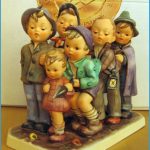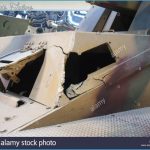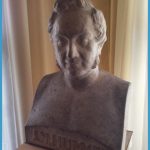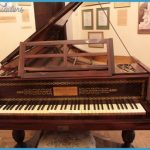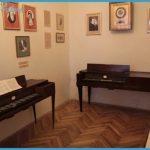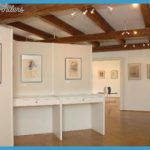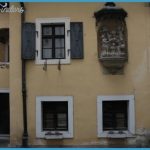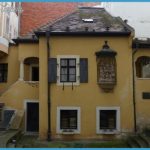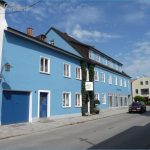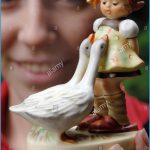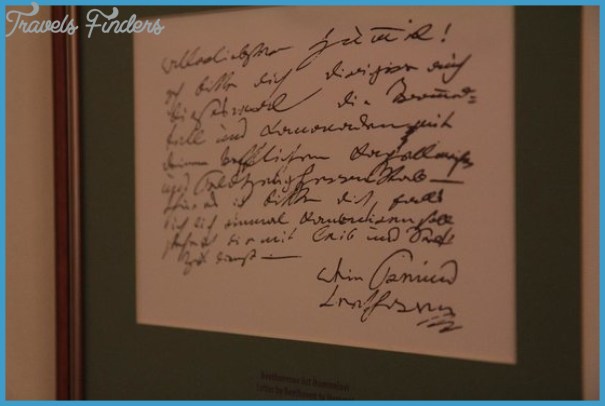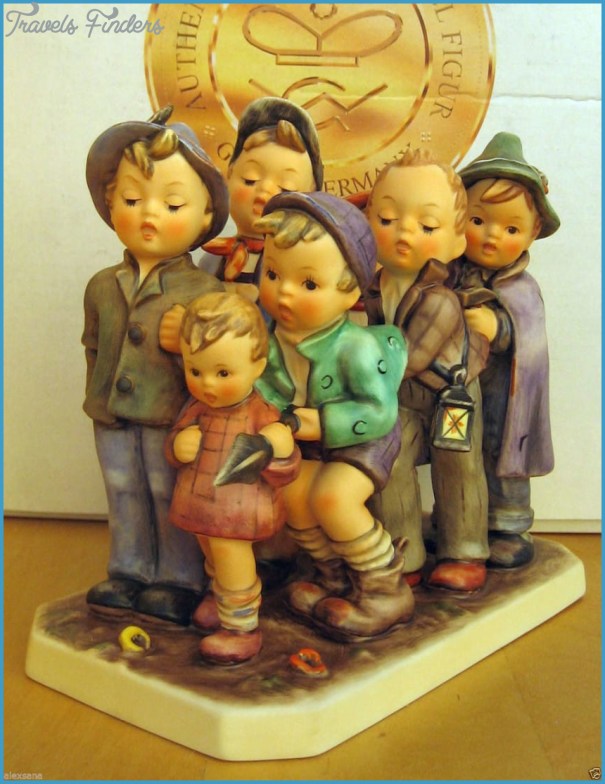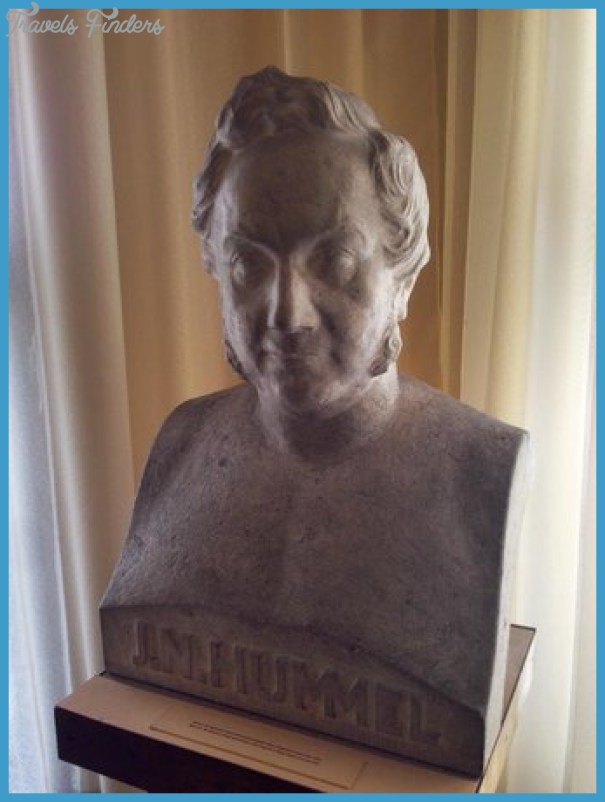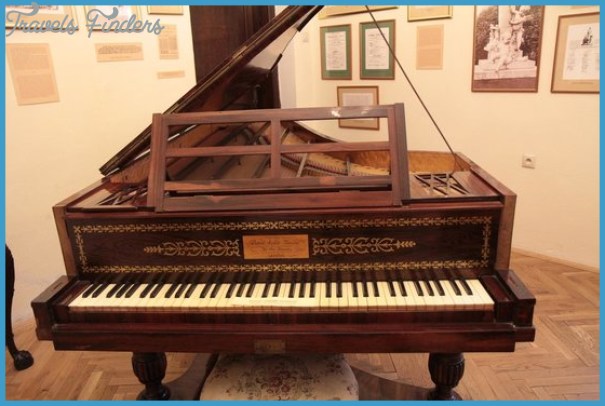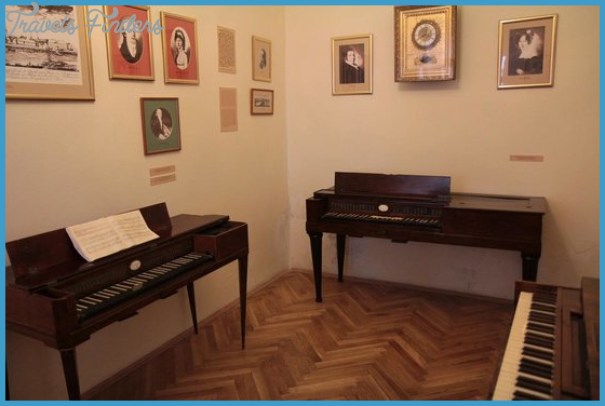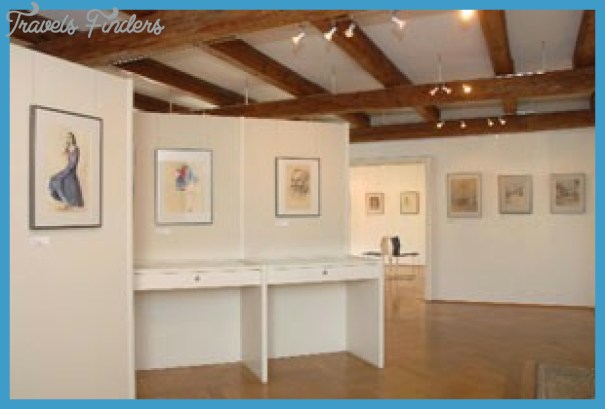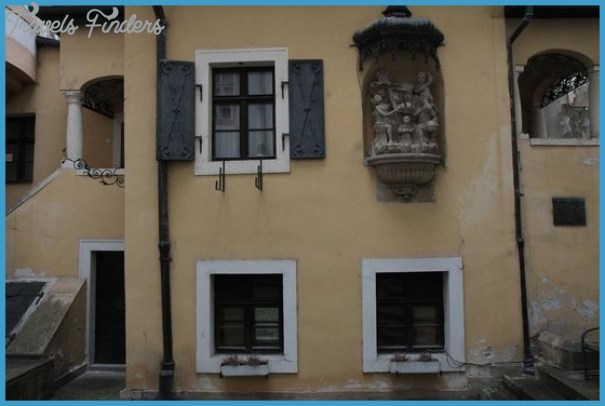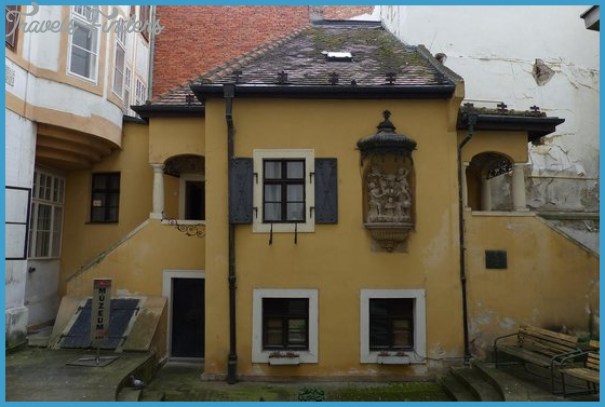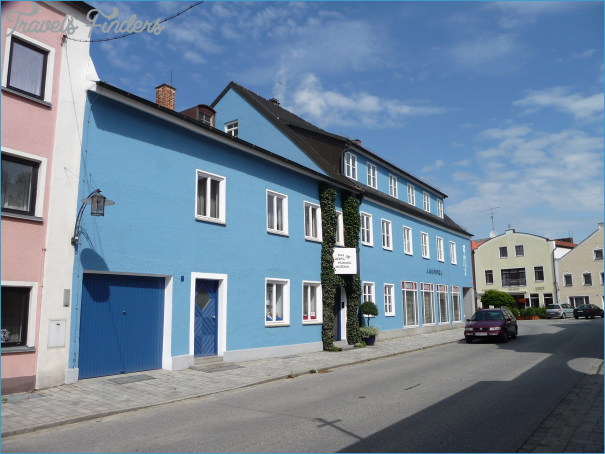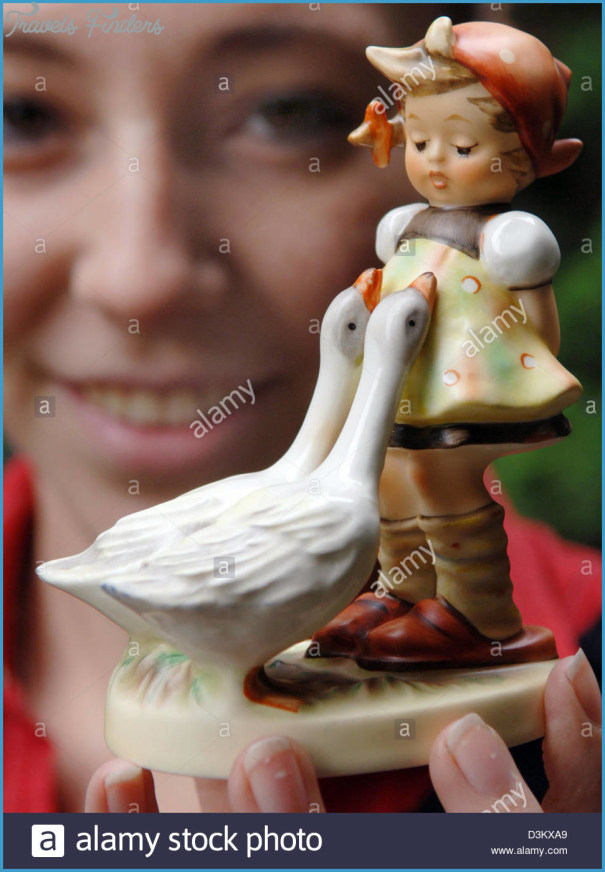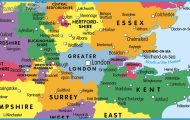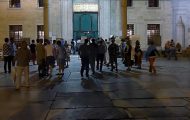HUMMEL MUSEUM
Deep within the Old Town of Bratislava, just off the square dominated by the Primatial Palace, a little architectural pearl is hidden behind an improbable shell of modern buildings. This is the 17th-century house in which the Austrian composer and piano virtuoso Johann Nepomuk Hummel was born, on 14 November 1778, and spent his earliest years. It can be discovered by entering through the doorway of 2 Klobucmcka ulica, which is a music and CD shop and a glass gallery. The two-storey cottage, with a staircase at each side, presides over a little courtyard with a miniature amphitheatre. The rather ornate plaque outside the Hummel Museum was put up in 1858, on the 80th anniversary of Hummel’s birth. It was nearly 50 years later, on the centenary of his death (he died in Weimar on 17 October 1837), that the museum opened; in 1964 the house was restored and the museum achieved its present form. Long before, Hummel’s widow had donated his desk, two pianos (a Glockner, locally made and once his father’s, and a Viennese Katholnik) and important correspondence and other documents to the city museum in Bratislava (or Pressburg, the German name by which Hummel would have called his native city); the documents, now the property of the Bratislava City Archives, along with autographs, printed Rights were not granted to include these illustrations in electronic media. Please refer to print publication Hummel’s birthplace, Bratislava editions, correspondence and recordings, provide the basis of the display in the Hummel Museum.
HUMMEL MUSEUM Photo Gallery
Three rooms are open to the public and, besides the items mentioned above, there are further pianos (including a London-made Erard), portraits, a bust and a death mask, as well as a series of engravings and other reproductions of cities with which Hummel had links. The music on display includes a facsimile of the manuscript of his popular piano method (published in 1828) and his own editions of Mozart piano concertos. The captions are in Slovak and English.
Hummel’s father was a violinist. The family settled in Vienna in 1786, when he became musical director of the Theater auf der Wieden. Johann was already regarded as a prodigy and had little trouble attracting the interest of Mozart, who agreed to take him as a pupil on the understanding (normal at the time in such circumstances) that he lived en famille with the Mozarts, at the Figarohaus’ (open to the public; see Mozart), just behind the Dom, St Stephen’s. Hummel made remarkable progress.
At a late hour Mozart and his wife return home from a party. On entering their apartment the boy is discovered stretched on chairs fast asleep. Some new pianoforte music has just arrived which they are both anxious to hear. Mozart, however, will not play it himself, but tells his wife . . . to wake up Hans, give him a glass of wine, and let him play. This is no sooner said than done; and now, should anything go wrong, there is an opportunity for suggestions. It is in fact a lesson, though given at the rather unusual hour of midnight.
The lessons were discontinued in 1788, when Mozart recommended that the elder Hummel accompany his son on a concert tour of the kind he and his father had earlier undertaken; and that they did.
In 1887, on the 50th anniversary of his death, a monument to Hummel by the sculptor V. Tilgner was erected in the garden of the Grassalkovich Palace (where Hummel’s father had once played in the orchestra), now the main city park in Bratislava.

